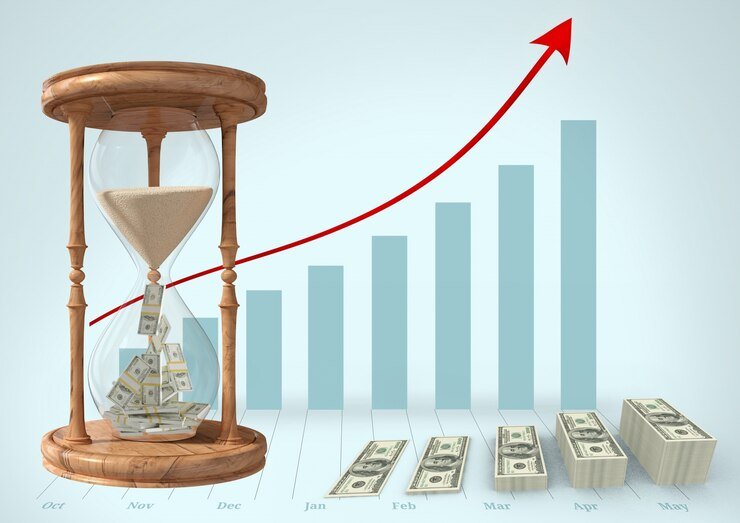Demand forecasting can be at the national or international level. Thus, the scope of forecasting tasks will depend upon the area of operation of the firm in the present as well as what is proposed in future.
Demand forecasting can also be confined to a given product or service supplied by a small firm in a local area.
While forecasting demand cost and benefit should exceed the time involved.
A necessary trade-off has to be struck between:
| COST TIME VS. BENEFIT↓ ↓ ↑ |
TYPES OF FORECASTS:
| MACRO LEVEL FORECASTINGINDUSTRY LEVEL FORECASTINGFIRM LEVEL FORECASTINGTIME PERIOD FORECASTING |
Macro level forecasting: Deals with the general economic environment prevailing in the economy as measured by the Index Of Industrial Production, national income and general level of employment, etc.
Industry Level Forecasting: Is concencered with forecasting demand for industry as a whole. For eg. Demand for cement in India.
Firm Level Forecasting: Is concencered with forecasting demand for a particular firm. For eg. demand for cement in Ambuja.
Time Period Forecasting: Based on time period, demand forecasting may be divided into short term and long term forecasting.
| Points | Short Period | Long Period |
| Duration | Six Months Or Less Than a Year | 2 To 5 Years or more |
| Type of Decision | Tactical Decisions | Strategic Decisions |
DEMAND DISTINCTIONS:
Business managers should have a clear understanding of the demand for various kinds of products. It is important to understand the demand distinctions which are as follows:
| PRODUCER GOODS AND CONSUMER GOODSDURABLE GOODS AND NONDURABLE GOODSDERIVED DEMAND AND AUTONOMOUS DEMAND DEMAND FOR FIRMS PRODUCT AND INDUSTRY DEMANDSHORT RUN DEMAND AND LONG RUN DEMAND |
PRODUCER GOODS AND CONSUMER GOODS
- PRODUCER GOODS
- Meaning: are those goods which are used for production of other goods. Either consumer goods or producer goods themselves.
- Example: machines, plants and equipment, etc.
- CONSUMER GOODS
- Meaning: Consumer goods are those goods which are used for final consumption.
- Example: clothes, residential houses, etc.
DEMAND FOR DURABLE GOODS AND NON- DURABLE GOODS :
Goods may be further divided into durable goods and non-durable goods.
NON DURABLE GOODS:
are those which cannot be consumed more than once. They meet only the current demand.
EXAMPLES OF NON DURABLE PRODUCER GOODS:
| Raw MaterialsFuel And PowerPacking Items |
EXAMPLES OF NON DURABLE CONSUMER GOODS:
| BeveragesBreadMilk |
DURABLE GOODS:
Are those goods which do not wear out quickly, can be consumed more than once and yield utility over a period of time. Durable goods are likely to be derived from demand.
EXAMPLE OF DURABLE CONSUMER GOODS:
| CarsRefrigeratorsMobile Phones |
EXAMPLE OF DURABLE PRODUCER GOODS:
| BuildingPlant and MachineryOffice building |
SEMI DURABLE GOODS:
Further goods can be subdivided into semi durable goods. Are those goods which can be used for a limited period of time.
EXAMPLE:
| ClothesUmbrella |
DERIVED DEMAND AND AUTONOMOUS DEMAND:
DERIVED DEMAND :
- Demand for a commodity that arises because of the demand for some other commodity called “ parent product” , is called derived demand.
EXAMPLE:
| The demand for cement is related to building activity and hence, demand for cement activity is derived demand. |
- In general, demand for producer goods or industrial inputs is derived demand.
- The demand for complementary goods is derived demand.
AUTONOMOUS DEMAND:
- Demand for a product is independent of the demand of other products; it is called autonomous demand.
- It arises on its own out of the innate desire of the consumer to consume or possess the commodity.
EXAMPLE:
| Demand for basic needs: Food, Clothing And Shelter.Personal goods: Vehicle |
INTERPRETATION:
- Derived demand is indeterminate.
- Autonomous demand is determinate.
- In case of goods having alternative uses, determination of derived demand becomes a problem.
- The distinction is arbitrary and it is difficult to find out which product is entirely independent of other products.
DEMAND FOR FIRMS PRODUCT AND INDUSTRY DEMAND:
FIRMS PRODUCT:
- Demand for a firm’s product denotes the demand for a particular firm.
EXAMPLE:
| Demand for steel produced by Tata Iron and Steel Company |
INDUSTRIAL PRODUCT:
- Total demand for a particular industry denotes demand for Industrial Product.
EXAMPLE:
| Total demand for a particular industry. Eg. cement industry. |
SHORT RUN AND LONG RUN DEMAND:
- The distinction between short run and long run demand is based on time period.
SHORT RUN DEMAND:
- Short run demand refers to immediate reaction to:
| Changes in price of related commodities, income fluctuations, ability of consumers to adjust to their consumption pattern, advertisement, etc. |
LONG RUN DEMAND:
- Long run demand refers to demand which exists over a long period.
- Most generic products have long term demands.
- Long run exists as a result of:
| Changes in pricing, promotion or product improvement after enough time is allowed to adjust to the new situation. |
- Long term demand depends upon:
| Long term trendsAvailability of substitutesCredit facilities |
EXAMPLE:
| Say if electricity charges are reduced for a few months since it is for a short term period people would consume electricity for longer periods. But if say electricity charges are going to reduce for a long term period then people would switch to electronic devices and thus, the long term demand would be more for electronic gadgets. |
INTERPRETATION:
- Demand distinction helps in predicting demand
- Demand distinction is important since each of these goods exhibit different characteristics which should be taken into account while analyzing demand for them.
Thanks for Reading, Always Welcome.


